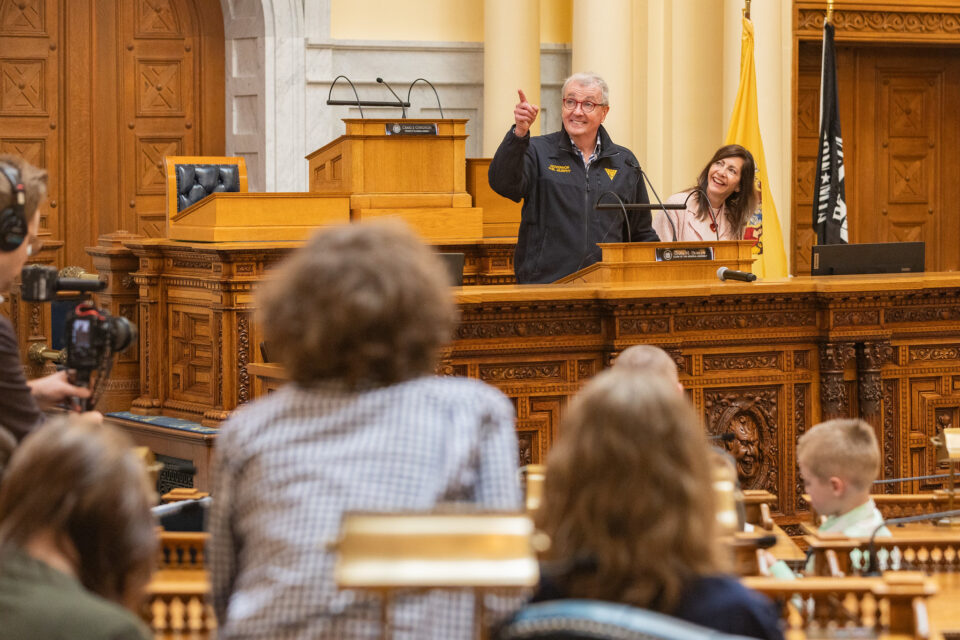
BREAKING: South Orange-Maplewood Principal Charged With Felony
March 11, 2024
Advocates For Strong Democracy Oppose Deeply Flawed OPRA bill
March 12, 2024New Report: NJ’s COVID Response Was a ‘Collective Failure’
Four years ago Gov. Phil Murphy authorized a review of what New Jersey did right and did wrong during COVID-19. The result, just released, is a 910-page report called “Independent Review of New Jersey’s Response to the COVID-19 Pandemic.” In its final pages the analysts call the state’s actions a “collective failure,” concluding, “neither the state nor the federal government had clear, executable plans in place to respond to and manage such limited resources in an uncertain and rapidly evolving environment.”
The report covers a lot of ground, including nursing home deaths, over-stressed hospitals, COVID testing and vaccinations, and public communication. Let’s look at the section on education.
The section (starting on page 505) begins with an acknowledgement of the “long-lasting effects on their learning and development” for children, many of whom missed school for over a year. The report notes that “students’ NAEP testing scores declined more between 2019 and 2022 than the national average in 4th-grade math, 8th-grade math, and 4th-grade reading,” largely due to the length of school closures. We already had an achievement gap between low-income students of color and wealthier White students and “this gap became a chasm during the pandemic.”
Why? Because our closures were long, particularly in large urban districts–from March 2020 to September 2021— where students “are more likely to come from low-income families in which parents are not necessarily available to keep their children focused and attentive through long days of virtual instruction and where children are less likely to live in homes large enough to support dedicated, quiet, private learning spaces.” It will take years—and significant investment,— the report says, to get back to 2019 achievement gaps.
Of course, there were multiple factors that led to test declines. The report points to an unusual level of uncertainty, compared to other states, regarding how long the school closures would last, with Gov. Murphy first issuing a series of Executive Orders that extended the closures step by step, compared to states like Florida, which mandated reopening schools in August 2020, a full year before NJ. From the report:
“While all states faced uncertainty regarding the course of the pandemic, the Governor’s Office and the NJ [Department of Education] reacted more slowly than some other states in announcing that school closures would last for the duration of the 2019-2020 school year. That uncertainty made it difficult for LEAs to prepare proactively for long-term virtual learning and exacerbated delays in districts’ transitions to remote schooling.”
This uncertainty led to other confounding factors, like food insecurity (low-income families sometimes rely on schools for meals) and the “digital divide,” with many urban students unable to attain laptops and/or reliable internet. If we don’t know how long students will be home, how much energy should we put into buying chromebooks?
The report calls out the impact of the NJ Education Association’s on unnecessarily long school closures:
“Of note, New Jersey is home to one of the strongest teachers’ unions in the U.S., and there is significant empirical evidence that schools where teachers were represented by unions reopened later. In New Jersey, teachers’ unions expressed concerns over rising cases of COVID-19 infection, the high cost of equipping schools to follow safety guidelines (such as purchasing masks or barriers), and the lack of universal vaccination (particularly in January 2021, when the State considered reopening schools for in-person education but vaccines were not yet available for the general population).”
In states where “unions have more negotiating power” like in New Jersey, reopening schools became “a contentious issue.” Parents and teachers “vocalized diverse opinions, forcing school administrators to balance these competing interests. For students, this meant they:
• Were less likely to start the 2020-2021 school year with in-person instruction.
• Were less likely to open for in-person instruction in the fall semester.
• Spent more weeks overall administering distance learning.
“New Jersey was no different,” the report says. “Its teachers’ union was robust and generally opposed reopening in-person school, particularly in late 2020, when the vaccine was not yet widely available.”
And,
“Even among peers that similarly allowed for locally determined reopening, New Jersey had some of the least in-person or hybrid learning in the 2020-2021 school year.”
In addition, New Jersey has not acted as quickly as other states on data-driven learning loss interventions: “Governor Murphy announced a High-Impact Tutoring Program in February 2023, but it was at a smaller scale than other states’ programs.”
Overall, the report concludes, “New Jersey’s educational outcomes, such as learning loss, days of virtual education, or equity outcomes, often measured below the national average and other benchmark states. These challenges demand consideration, particularly in the event of another emergency affecting schools.”





1 Comment
Sad thatthe decision makers were attempting to SAVE LIVES!